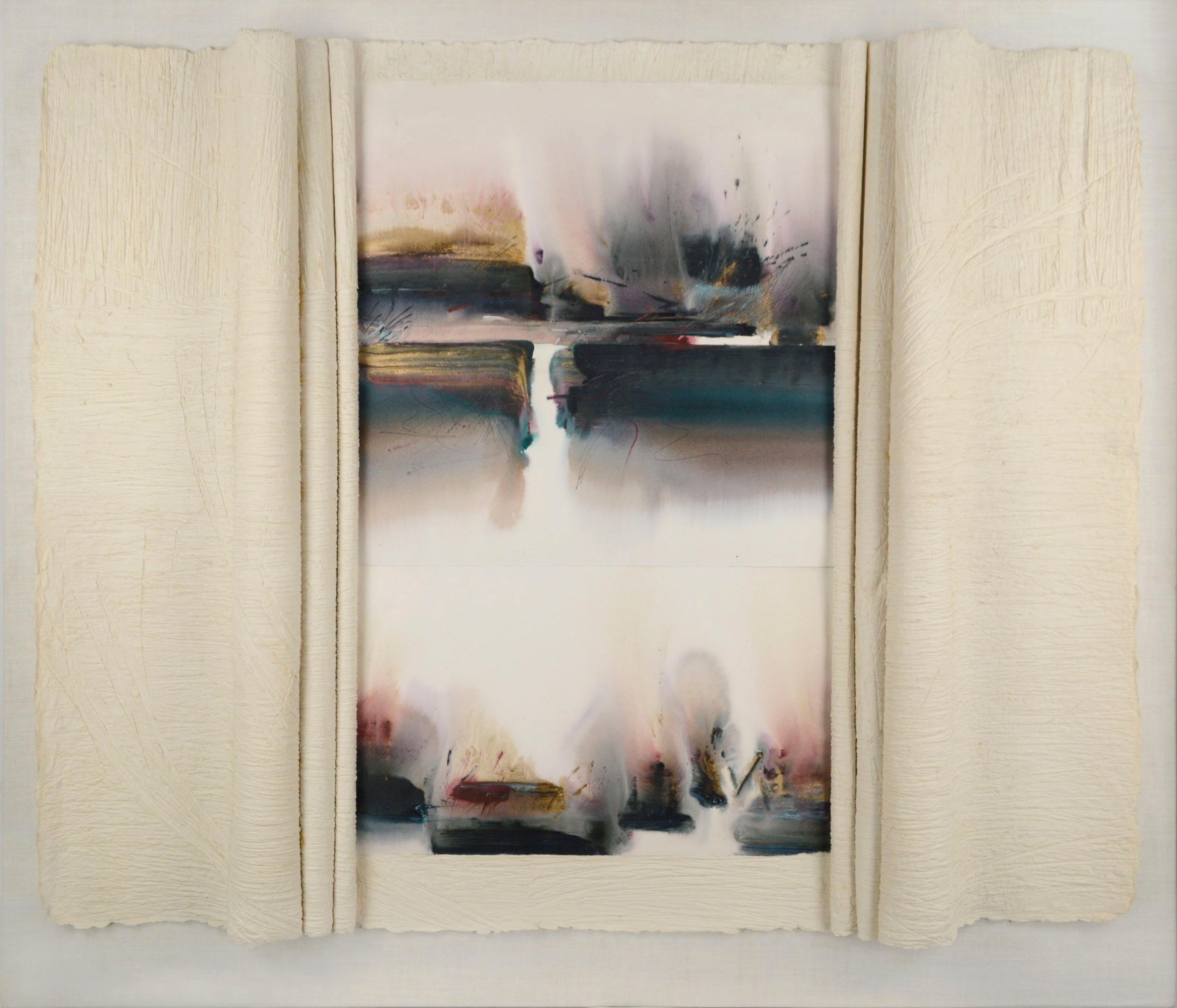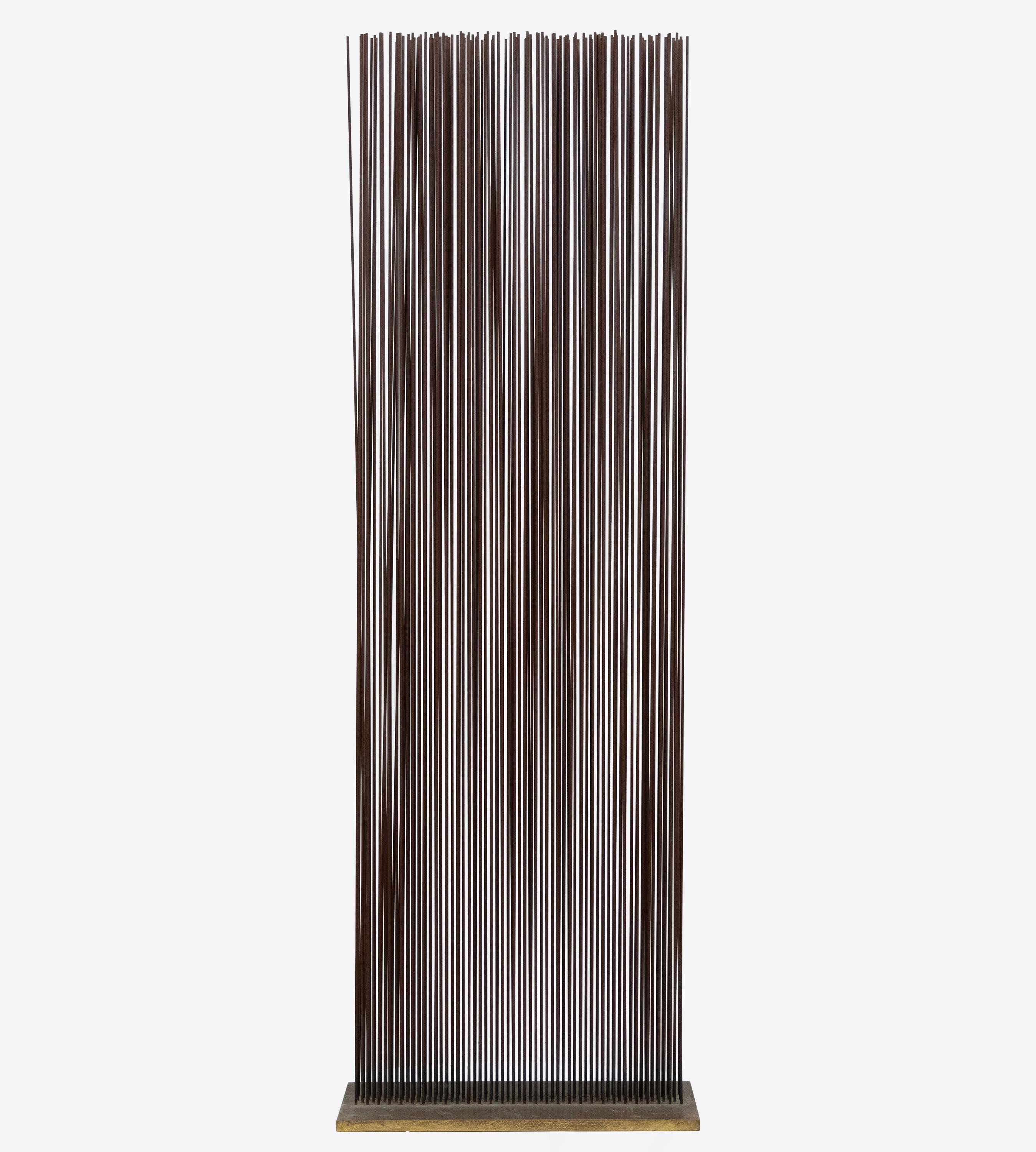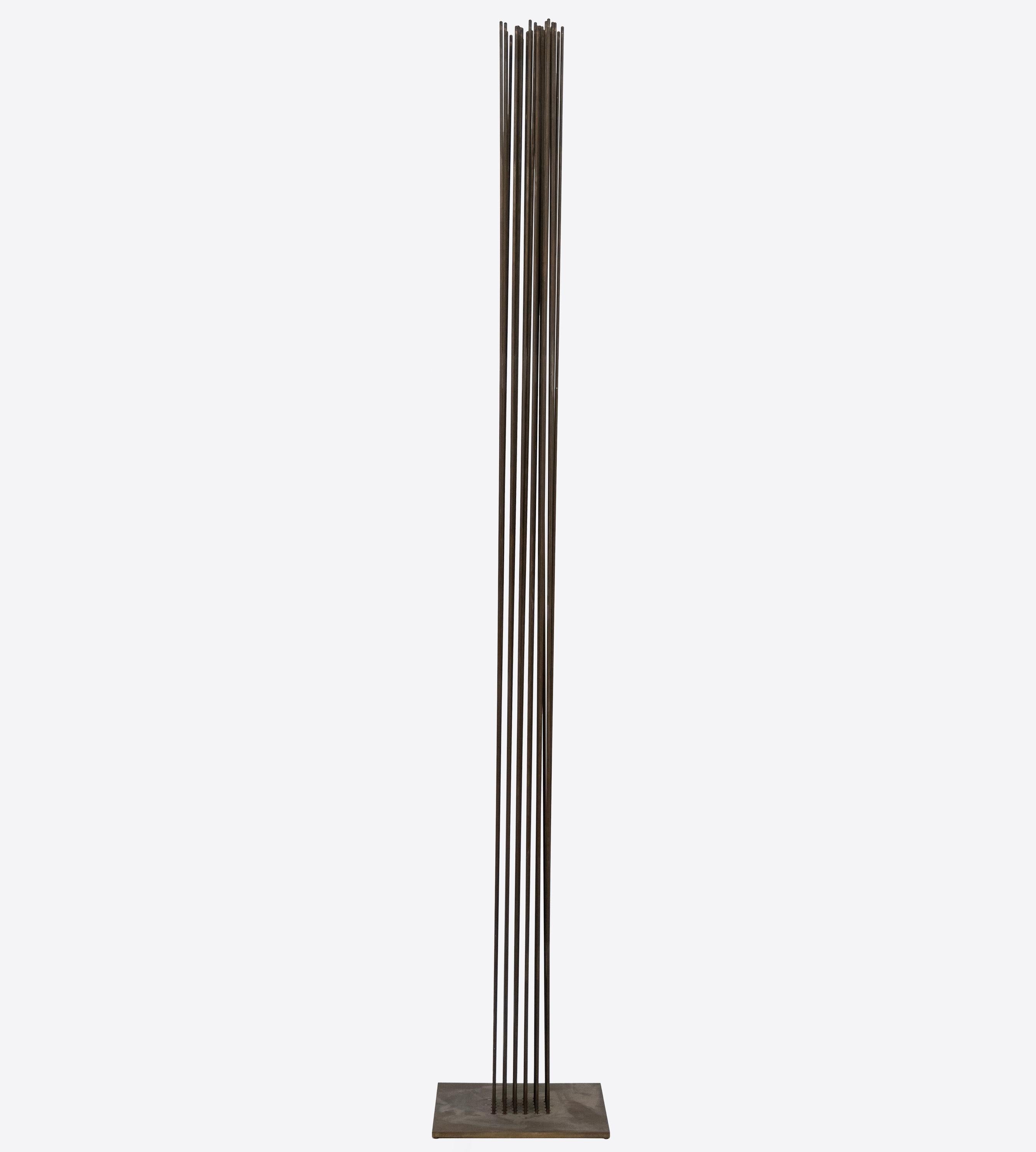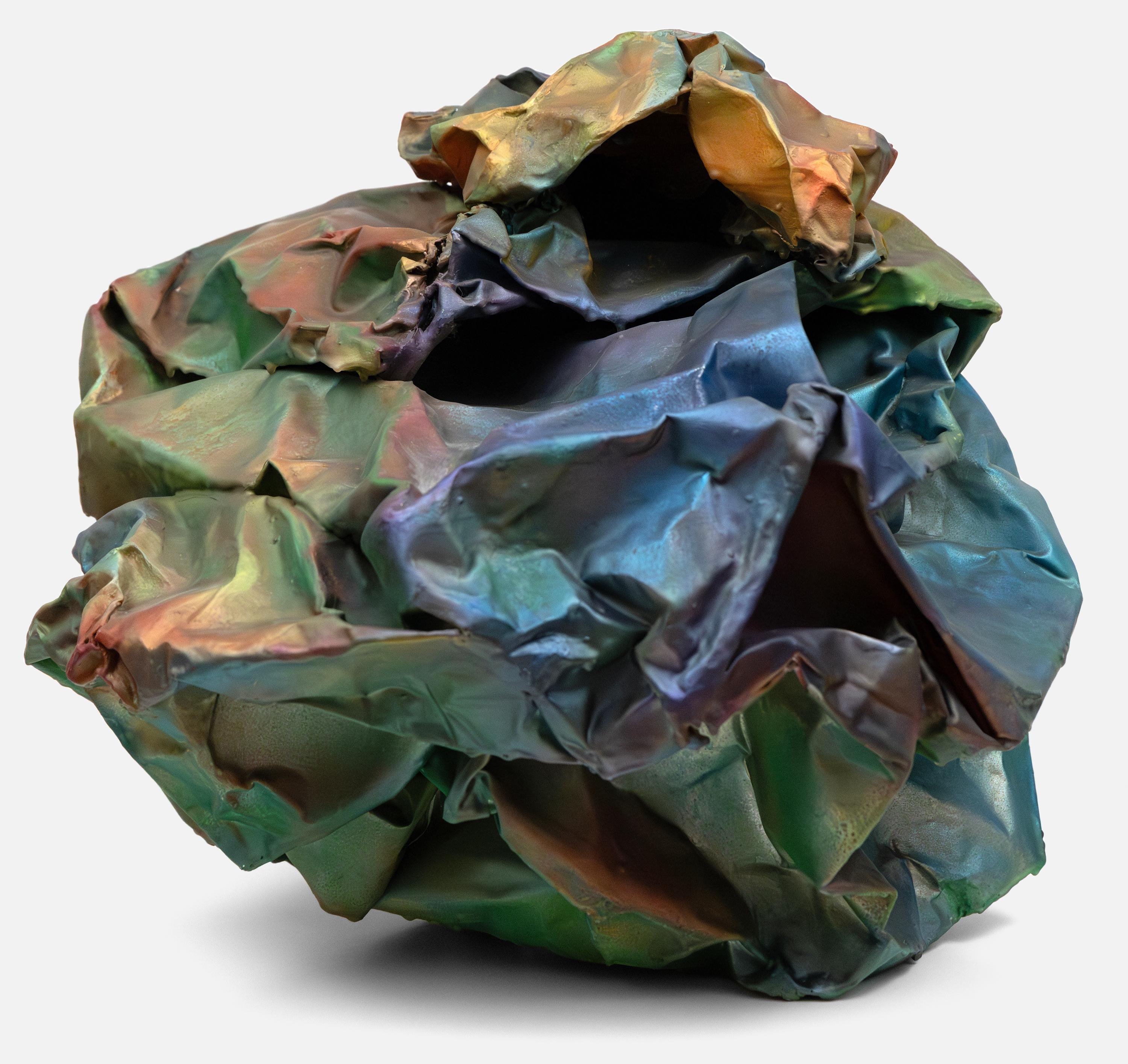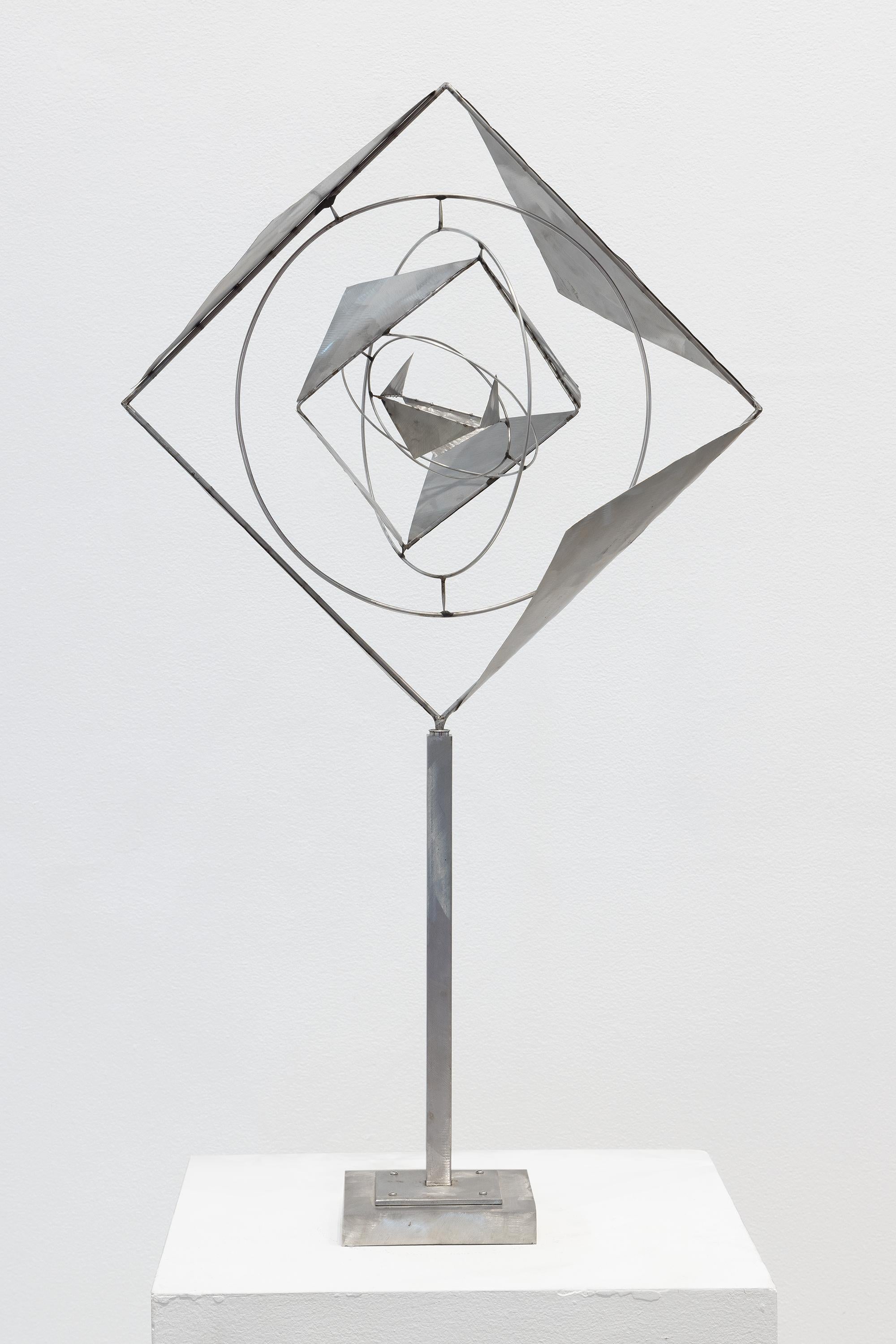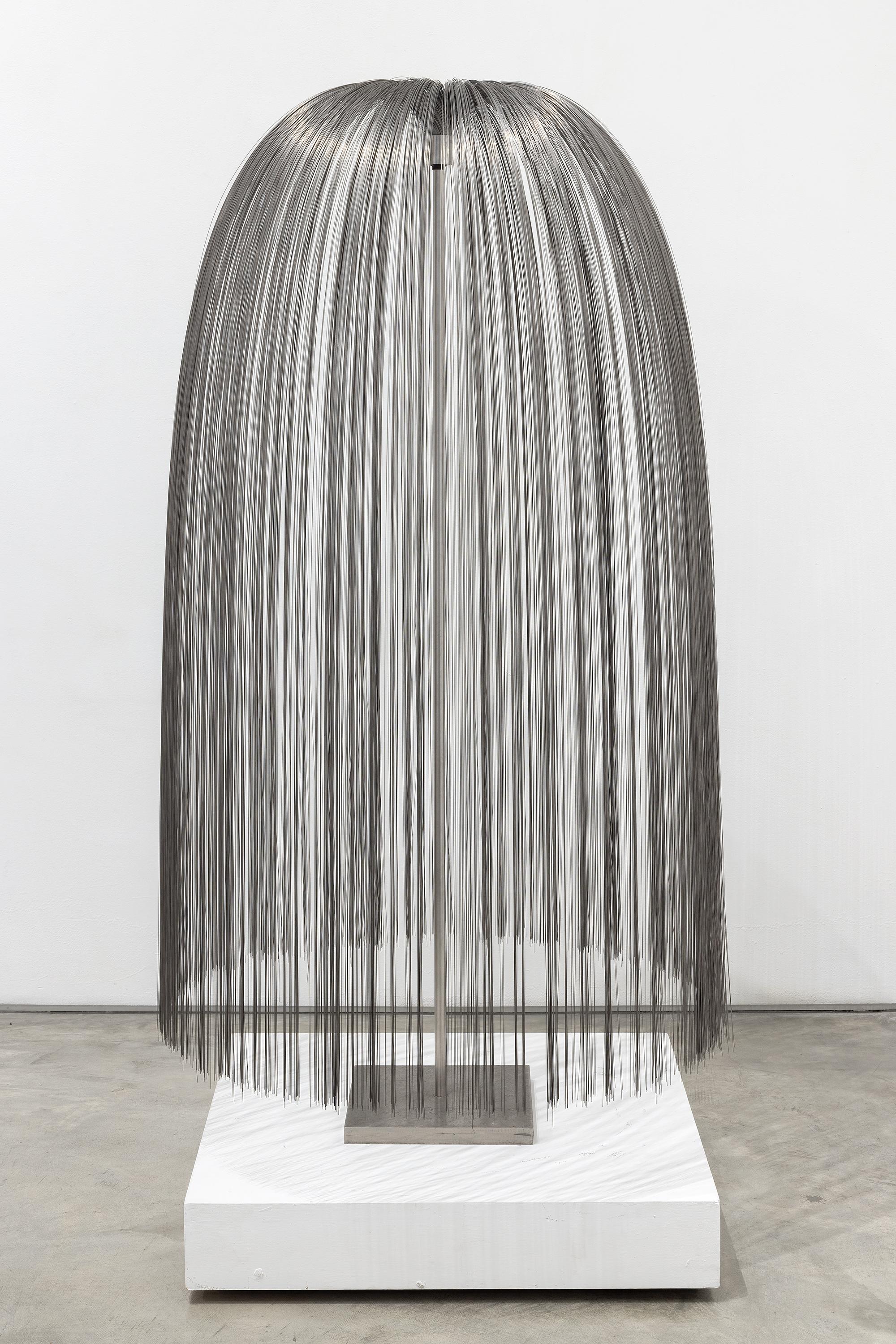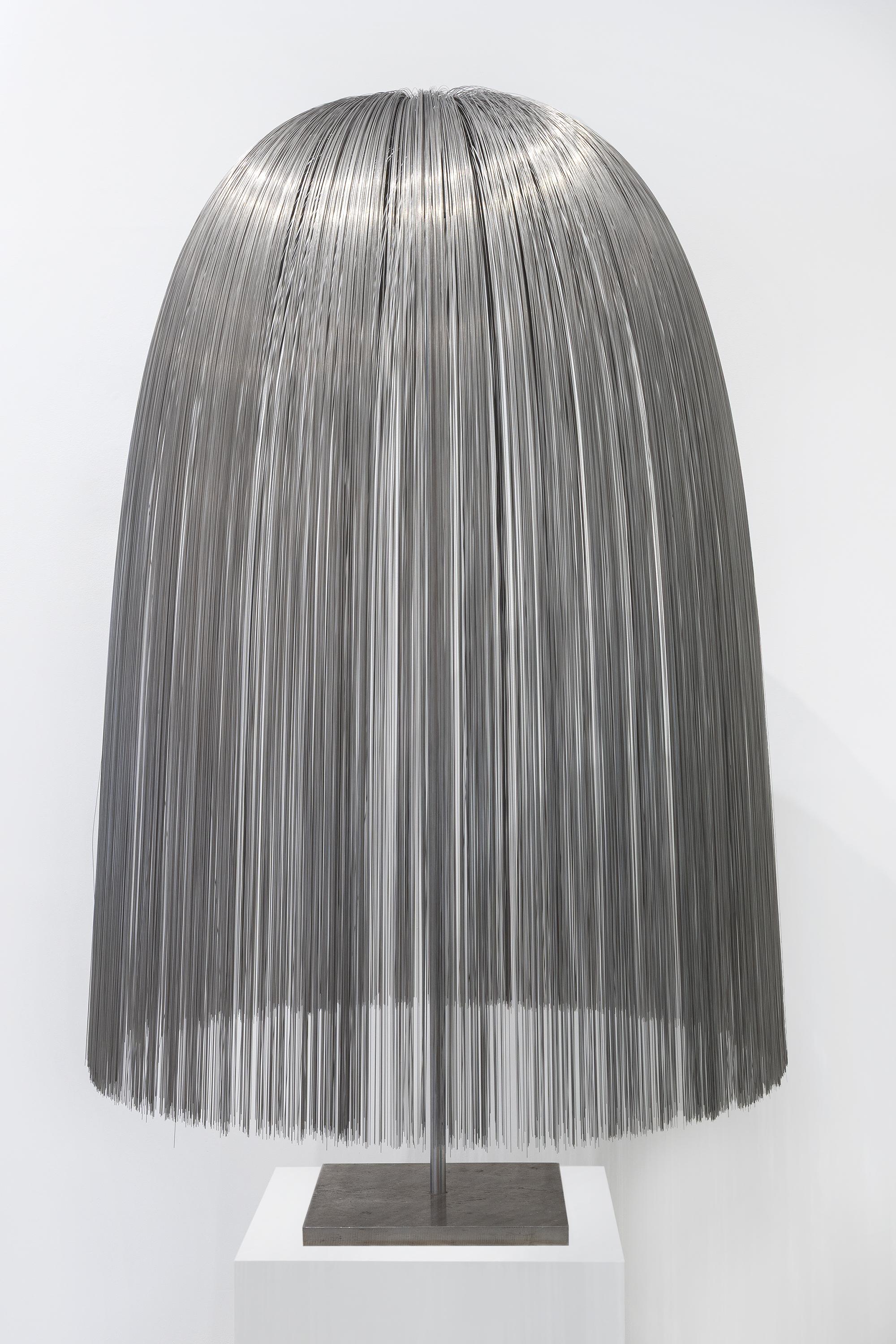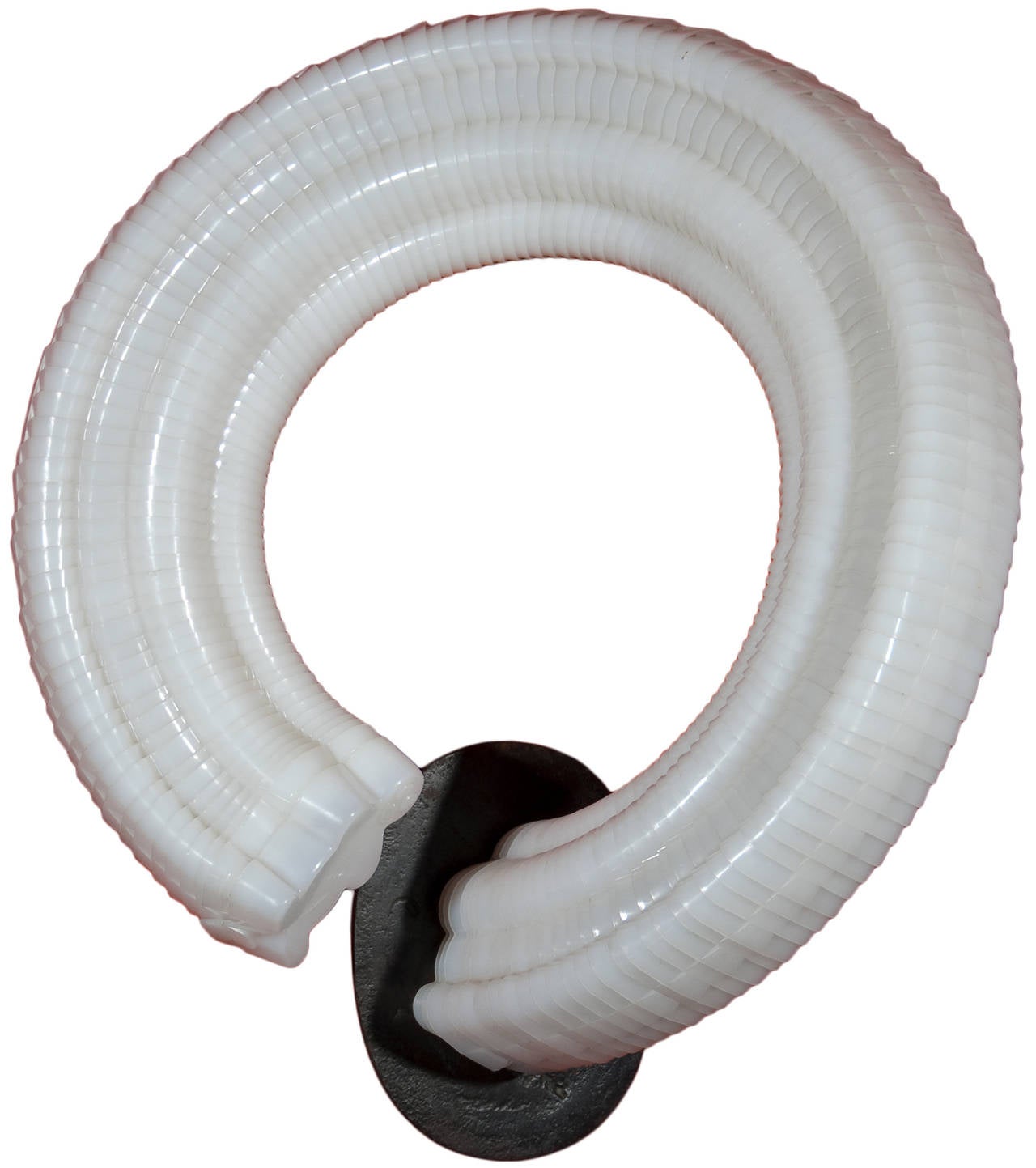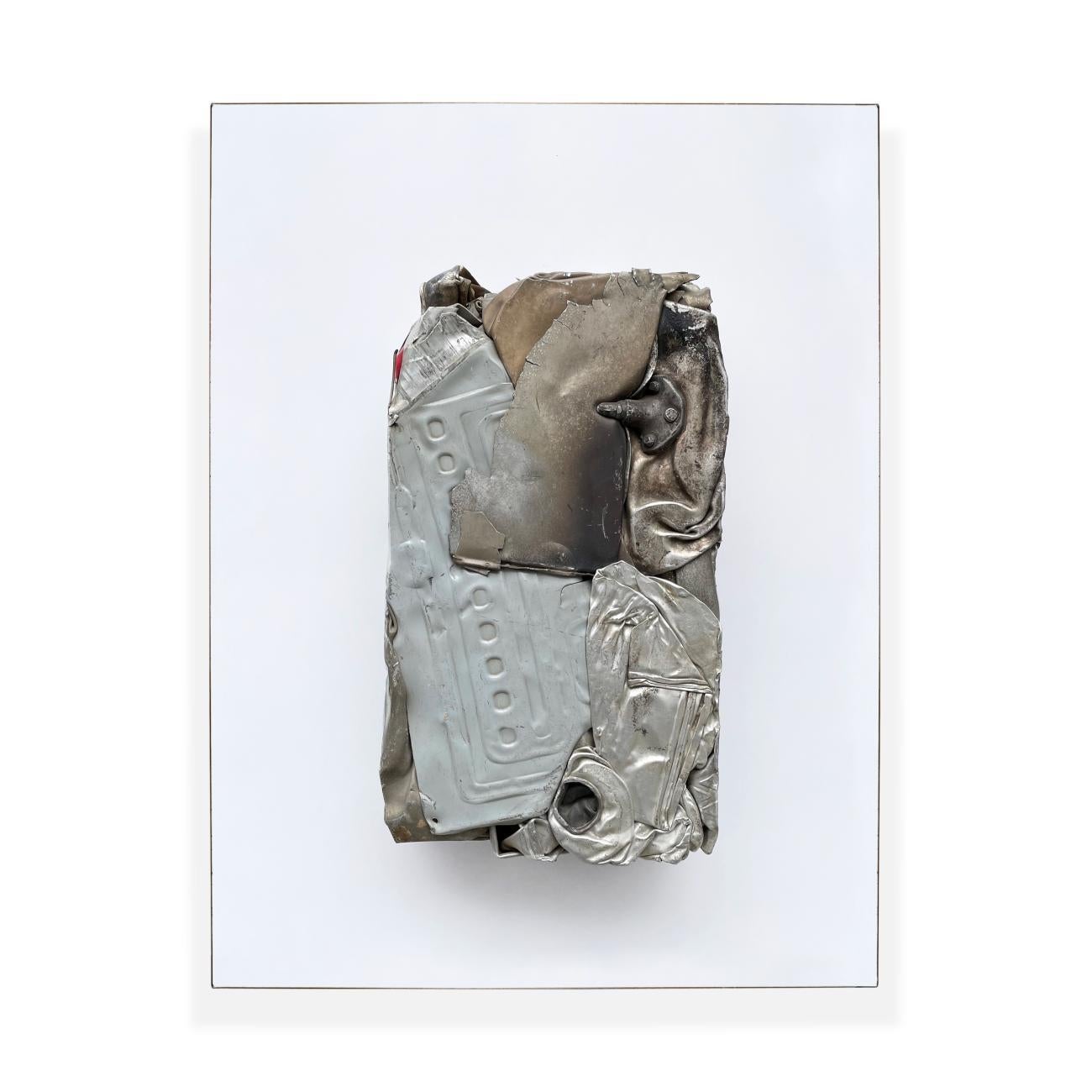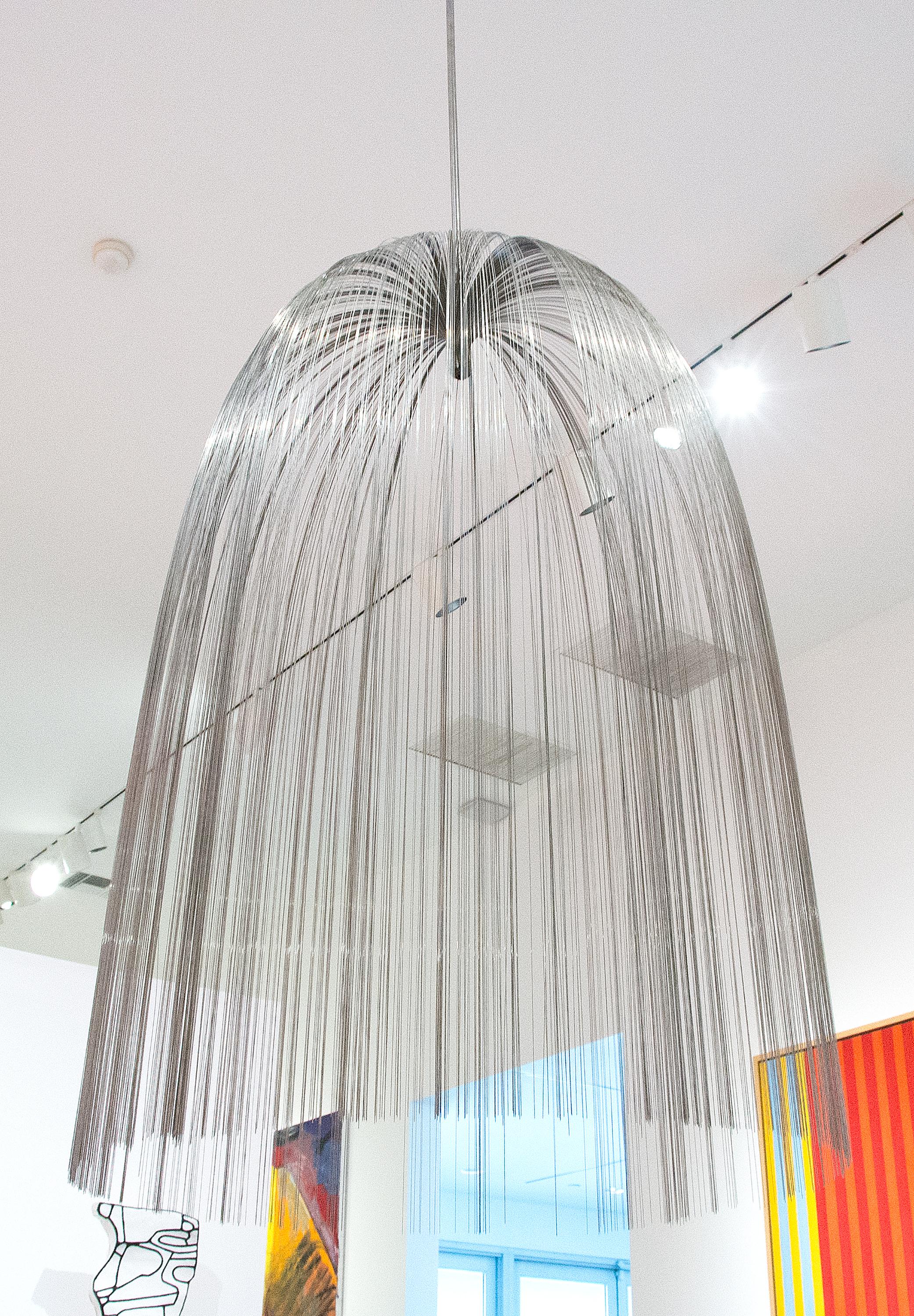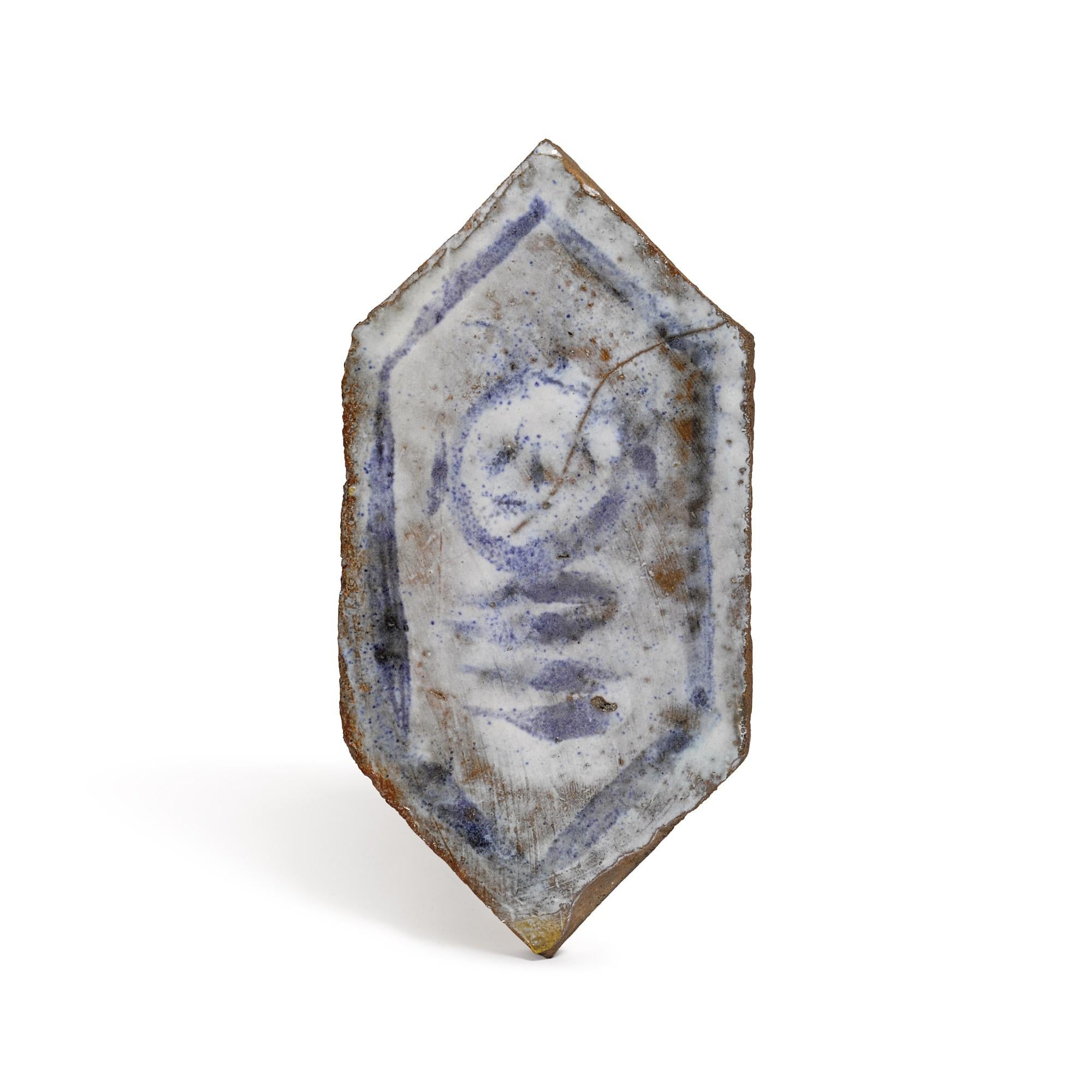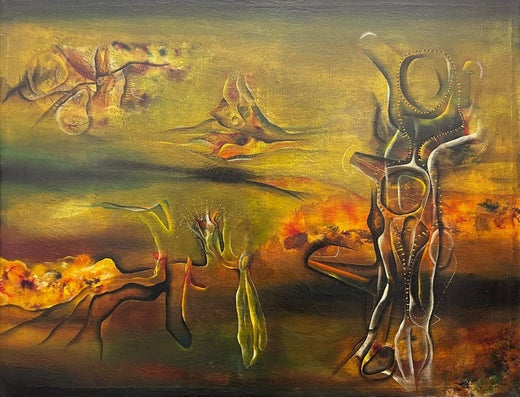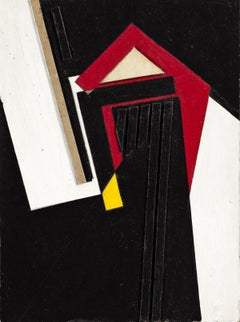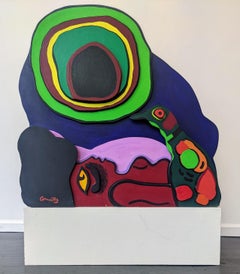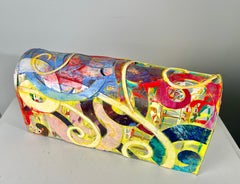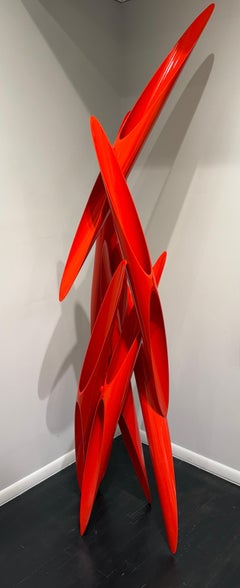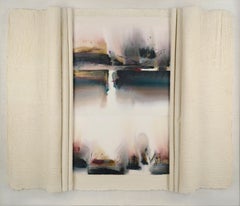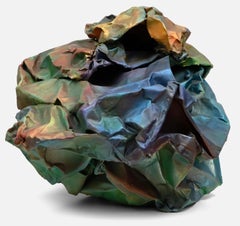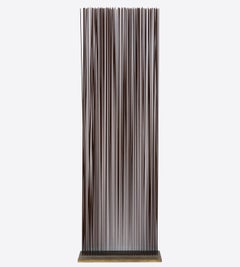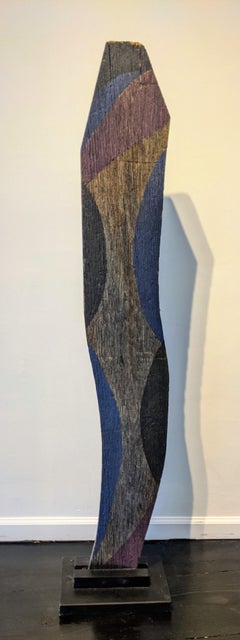
"Abstract Sculpture, " Gerome Karmwoski, Wood Surrealist Expressionism
View Similar Items
Want more images or videos?
Request additional images or videos from the seller
1 of 7
Gerome Kamrowski"Abstract Sculpture, " Gerome Karmwoski, Wood Surrealist Expressionismcirca 1960
circa 1960
$8,000List Price
About the Item
- Creator:Gerome Kamrowski (1914-2004, American)
- Creation Year:circa 1960
- Dimensions:Height: 62 in (157.48 cm)Width: 8 in (20.32 cm)
- Medium:
- Movement & Style:
- Period:
- Condition:
- Gallery Location:New York, NY
- Reference Number:1stDibs: LU184129914722
Gerome Kamrowski
Gerome Kamrowski was born in Warren, Minnesota, on January 19, 1914. In 1933 Kamrowski was awarded a scholarship to the Art Students League, where he would study in New York under Hans Hofmann. Kamrowski decided to remain in New York for a short time, to attend classes taught by George Grosz. After a few weeks, he returned to St. Paul, and found a position in the mural painting division of the Minnesota WPA. In 1937 Kamrowski went to Chicago to study under László Moholy-Nagy and Alexander Archipenko at the New Bauhaus. There he was exposed to new and interesting ideas regarding the role of nature in art and the "geometric basis of natural form". In 1938 Kamrowski received a Guggenheim fellowship to attend Hans Hofmann's summer school in Provincetown, Massachusetts. He then relocated to New York where he met William Baziotes. Together they shared a fascination in Surrealist automatic writing, and both artists explored its possibilities in their paintings. Kamrowski was particularly drawn to Surrealism's fundamental appeal of intuition over intellect. He was interested seeking a process that "binds all things together...a kind of cosmic rhythm". Throughout the late 1930s and early 1940s while living in New York, Kamrowski became an integral part of the emerging surrealists. In 1942, the artist Roberto Matta attempted to form a group of artists to investigate new applications for Surrealist methods. He invited Kamrowski, along with William Baziotes, Jackson Pollock, Peter Busa, and Robert Motherwell to join. No matter how short lived the collaboration was, this group was the kernel of the open-ended movement that was referred to as abstract surrealism and would over time prove to be the beginnings of abstract expressionism. It was during this time, the winter of 1939/1940, that an amazing collaboration was made. Kamrowski and two of his contemporaries, Baziotes and Pollock, came together and began to paint. This painting was a pivotal work, showing the transition from, and fusion of, Surrealism to Action Painting and Abstract Expressionism. In 1947, Kamrowski was invited to the Surrealist Exhibition in Paris by Surrealist leader André Breton. Breton said of him, "Of all the young painters whose evolution I have been able to follow in New York during the last years of the war, Kamrowski is the one who has impressed me far the most by reason of the "quality" and sustained character of his research." In the 1940s Kamrowski relocated to Ann Arbor, Michigan in order to teach at the University of Michigan School of Art. It was a career that would span 38 years, and would encourage countless others to push their artistic boundaries. Teaching became a second passion. Over the years, Kamrowski's energy and drive never faltered, and his style continued to evolve dynamically from the abstract intellectual exercises of the past to colorful 3D pieces often made of glass, cement, and found objects. He worked every day and exhibited steadily in Michigan and elsewhere.
About the Seller
5.0
Platinum Seller
Premium sellers with a 4.7+ rating and 24-hour response times
Established in 2022
1stDibs seller since 2022
110 sales on 1stDibs
Authenticity Guarantee
In the unlikely event there’s an issue with an item’s authenticity, contact us within 1 year for a full refund. DetailsMoney-Back Guarantee
If your item is not as described, is damaged in transit, or does not arrive, contact us within 7 days for a full refund. Details24-Hour Cancellation
You have a 24-hour grace period in which to reconsider your purchase, with no questions asked.Vetted Professional Sellers
Our world-class sellers must adhere to strict standards for service and quality, maintaining the integrity of our listings.Price-Match Guarantee
If you find that a seller listed the same item for a lower price elsewhere, we’ll match it.Trusted Global Delivery
Our best-in-class carrier network provides specialized shipping options worldwide, including custom delivery.More From This Seller
View All"Untitled, " Seymour Fogel, Geometric Abstraction, Texas Hard-Edge
By Seymour Fogel
Located in New York, NY
Seymour Fogel
Untitled
Oil on illustration board construction
10 x 7 1/2 inches
Provenance:
Estate of the artist
Charles and Faith McCracken
Larry and Trish Heichel
Private Collection
Seymour Fogel was born in New York City on August 24, 1911. He studied at the Art Students League and at the National Academy of Design under George Bridgeman and Leon Kroll. When his formal studies were concluded in the early 1930s he served as an assistant to Diego Rivera who was then at work on his controversial Rockefeller Center mural. It was from Rivera that he learned the art of mural painting.
Fogel was awarded several mural commissions during the 1930s by both the Works Progress Administration (WPA) and the Treasury Section of Fine Arts, among them his earliest murals at the Abraham Lincoln High School in Brooklyn, New York in 1936, a mural in the WPA Building at the 1939-1940 New York World's Fair, a highly controversial mural at the U.S. Post Office in Safford, Arizona (due to his focus on Apache culture) in 1941 and two murals in what was then the Social Security Building in Washington, D.C., also in 1941. Fogel's artistic circle at this time included Phillip Guston, Ben Shahn, Franz Kline, Rockwell Kent and Willem de Kooning.
In 1946 Fogel accepted a teaching position at the University of Texas at Austin and became one of the founding artists of the Texas Modernist Movement. At this time he began to devote himself solely to abstract, non-representational art and executed what many consider to be the very first abstract mural in the State of Texas at the American National Bank in Austin in 1953. He pioneered the use of Ethyl Silicate as a mural medium. Other murals and public works of art done during this time (the late 1940s and 1950s) include the Baptist Student Center at the University of Texas (1949), the Petroleum Club in Houston (1951) and the First Christian Church, also in Houston (1956), whose innovative use of stained glass panels incorporated into the mural won Fogel a Silver Medal from the Architectural League of New York in 1958.
Fogel relocated to the Connecticut-New York area in 1959. He continued the Abstract Expressionism he had begun exploring in Texas, and began experimenting with various texturing media for his paintings, the most enduring of which was sand. In 1966 he was awarded a mural at the U.S. Federal Building in Fort Worth, Texas. The work, entitled "The Challenge of Space", was a milestone in his artistic career and ushered in what has been termed the Transcendental/Atavistic period of his art, a style he pursued up to his death in 1984. Painted and raw wood sculpture...
Category
Mid-20th Century Abstract Geometric Abstract Paintings
Materials
Oil, Board
$4,600 Sale Price
20% Off
"Tropical Parrot with Woman, " Corneille, Carved Wood Sculpture with Bird
By Corneille
Located in New York, NY
Guillaume Cornelis van Beverloo (Corneille)
Tropical Parrot with Woman, circa 1970
Signed: Corneille
Edition Number: 6 of 8
Constructed and Painted wood
39" high x 40 1/2" wide x 6" ...
Category
1970s Figurative Sculptures
Materials
Wood, Paint
"Have a Nice Day" Al Loving, Abstract Expressionist Colorful Mailbox Sculpture
By Al Loving
Located in New York, NY
Al Loving
Have a Nice Day, 1992
Mailbox, acrylic paint, rag paper
8 1/2 inches high x 6 1/2 inches wide x 18 3/4 inches deep
Al Loving studied painting at the University of Illinoi...
Category
1990s Abstract Expressionist Abstract Sculptures
Materials
Metal
"Aim I" Alexander Liberman, Bright Red, Large Modernist Metal Sculpture
By Alexander Liberman
Located in New York, NY
Alexander Liberman
Aim I, 1980
Painted aluminum
83 high x 26 wide x 26 deep inches
Edition of 15
Regarded as a groundbreaking Minimalist artist, Alexander Liberman created pieces t...
Category
1980s Minimalist Abstract Sculptures
Materials
Metal
"The Trap" Hayward Oubre, Painted Wire Sculpture, Black Artist
Located in New York, NY
Hayward Oubre
The Trap, c. 1960
Painted wire sculpture
40 H. x 16 1/2 W. x 21 D. inches
Provenance:
Estate of the Artist
Deeply attached to his Souther...
Category
1960s Figurative Sculptures
Materials
Wire
"Hitch Hiked" Hayward Oubre, Painted Wire Sculpture, Southern Black Artist
Located in New York, NY
Hayward Oubre
Hitch Hiked, 1960
Signed on Base: OUBRE 60
Painted wire sculpture
45 H. x 21 W. x 19 D. inches
Provenance:
Estate of the Artist
Deeply at...
Category
1960s Figurative Sculptures
Materials
Wire
You May Also Like
Abstract Scroll, Large Scale Mixed Media Watercolor Assemblage w Handmade Paper
By Madeline de Joly
Located in Soquel, CA
Unique large scale mixed media assemblage featuring a three dimensional, textured handmade paper scroll unfurling to reveal an abstract expressionist watercolor painting with gold ac...
Category
Late 20th Century Post-War Abstract Drawings and Watercolors
Materials
Felt, Acrylic, Watercolor, Handmade Paper
Vegetative Form / - Grown Art -
Located in Berlin, DE
Paul Dierkes (1907 Cloppenburg - 1968 Berlin), Vegetative Form. Mahogany, 1958. 142 x 16 x 10 cm (sculpture), 21 x 17.5 cm (base), monogrammed "PD" on the reverse.
- Grown Art -
...
Category
1950s Post-War Abstract Sculptures
Materials
Mahogany
$3,319 Sale Price
20% Off
ASARABACA
By John Chamberlain
Located in Palm Desert, CA
"ASARABACA" is an abstract Post-War industrial weight aluminum sculpture created by John Chamberlain in 1973. The sculpture is 20 x 23 x 22 inches and weighs less than 50 lbs.
Cham...
Category
20th Century Post-War Abstract Sculptures
Materials
Metal
$225,000
Untitled (Sounding Sculpture)
By Harry Bertoia
Located in Palm Desert, CA
"Untitled (Sounding Sculpture)" is a Post-War abstract sculpture created by Harry Bertoia in circa 1970. This artwork is 48 x 15.75 x 8 inches and weighs 45 lbs.
Bertoia was enthra...
Category
20th Century Post-War Abstract Sculptures
Materials
Metal
Untitled (Sounding Sculpture)
By Harry Bertoia
Located in Palm Desert, CA
"Untitled (Sounding Sculpture)" is a Post-War abstract metal sculpture created by Harry Bertoia in circa 1970. The artwork is 103 x 16 x 16 inches and weighs less than 50 lbs.
Bert...
Category
20th Century Post-War Abstract Sculptures
Materials
Metal
Willow Sculpture
By Harry Bertoia
Located in Palm Desert, CA
"Willow Sculpture" is an abstract Post War stainless steel sculpture by Harry Bertoia in c. 1970-79. The artwork is 61 1/2 x 39 x 39 in.
Betroia's work creates a dynamic, flowing c...
Category
20th Century Post-War Abstract Sculptures
Materials
Stainless Steel
